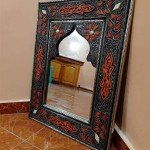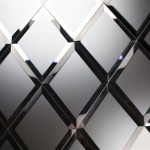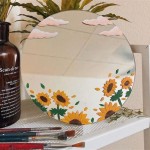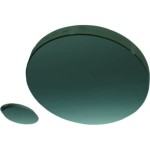How To Tint a Mirror
Tinting a mirror involves applying a thin film or coating to the glass surface to alter its reflective properties, typically reducing light transmission and adding a specific color. This process can enhance aesthetics, improve privacy, and reduce glare. Various methods exist for tinting mirrors, each with its own advantages and disadvantages.
Window Film Application: This is perhaps the most common and accessible method for tinting a mirror. Pre-cut window films are readily available in a range of colors and light transmission levels. These films are typically adhesive-backed and applied directly to the mirror surface. Proper surface preparation is crucial for successful application and involves thoroughly cleaning the mirror with a glass cleaner and ensuring it is free from dust and debris.
Applying window film requires precision and patience. A spray bottle filled with soapy water helps to position the film and prevent air bubbles. A squeegee is then used to smooth out the film and remove excess water. Trimming any excess film with a sharp blade completes the process.
Spray-On Tints: Another option for tinting a mirror is the use of spray-on tints. These products are typically applied in multiple thin coats to achieve the desired level of tint. They offer greater flexibility for complex shapes and sizes compared to window films. However, achieving a uniform, streak-free finish requires careful application and even spraying technique.
Surface preparation for spray-on tints is similar to window film application. The area surrounding the mirror should be masked off to prevent overspray. Thin, even coats are crucial to avoid drips and runs. Allowing sufficient drying time between coats is also essential for a professional-looking result.
Mirror Tinting Films: Specialized mirror tinting films are designed specifically for application to mirrors. These films often offer enhanced durability and reflectivity compared to standard window films. They are available in various colors and finishes, including mirrored, frosted, and decorative patterns. Applying mirror tinting films follows a similar process to standard window films, with careful attention to surface preparation and application technique.
Dipping Methods: For large-scale applications or specialized tinting effects, dipping the mirror in a tinting solution can be an effective method. This process involves submerging the mirror in a bath containing the tinting agent. The duration of submersion and the concentration of the tinting solution determine the final color and opacity. Dipping methods require specialized equipment and are typically carried out by professional glass tinting services.
Electrochromic Film: This advanced tinting technology uses a thin film that changes its light transmission properties when an electrical voltage is applied. Electrochromic films offer dynamic control over the tint level, allowing for adjustable light transmission and privacy. While offering significant advantages in terms of functionality, electrochromic film is generally more expensive than other tinting methods.
Considerations for Choosing a Tinting Method: Several factors influence the choice of tinting method. The size and shape of the mirror play a significant role. Window films are well-suited for smaller, regularly shaped mirrors, while spray-on tints offer greater flexibility for complex shapes. The desired level of tint and color are also important considerations. Window films and spray-on tints are available in a wide range of colors and opacities.
Durability and longevity are crucial factors to consider. Mirror tinting films typically offer greater durability than standard window films. Cost is another factor influencing the choice of method. Window films are generally the most cost-effective option, while electrochromic films are the most expensive. Finally, the level of expertise required for each method varies. Window film application is relatively straightforward, while dipping methods and electrochromic film installation typically require professional expertise.
Safety Precautions: When working with any tinting method, certain safety precautions should be observed. Always wear appropriate personal protective equipment, such as gloves and eye protection. Ensure adequate ventilation when working with spray-on tints or other chemical solutions. Follow the manufacturer's instructions carefully for each product. Dispose of any waste materials properly according to local regulations.
Maintenance and Care: Properly maintained tinted mirrors can last for many years. Cleaning should be done with a soft cloth and a mild glass cleaner. Avoid abrasive cleaners or scouring pads, which can scratch the tinted surface. Regular cleaning helps to maintain the appearance and functionality of the tinted mirror.

How To Make A Mirror Color Blocked Diy

A Trendy Reflection Tinted Mirror Style Decoist

How To Make A Mirror Color Blocked Diy

Tutorial How To Color A Mirror Or Glass Window Step By Highly Requested Howtocolor

Trend Alert 9 Tinted Decorative Mirrors Remodelista

A Trendy Reflection Tinted Mirror Style Decoist

Tinted Mirrors Or Coloured Everything You Need To Know

Tinted Mirrors Myhomestyle

Trend Alert 9 Tinted Decorative Mirrors Remodelista

Does One Way Mirror Tint Work After Dark Ap Tinting








